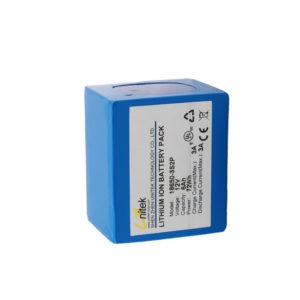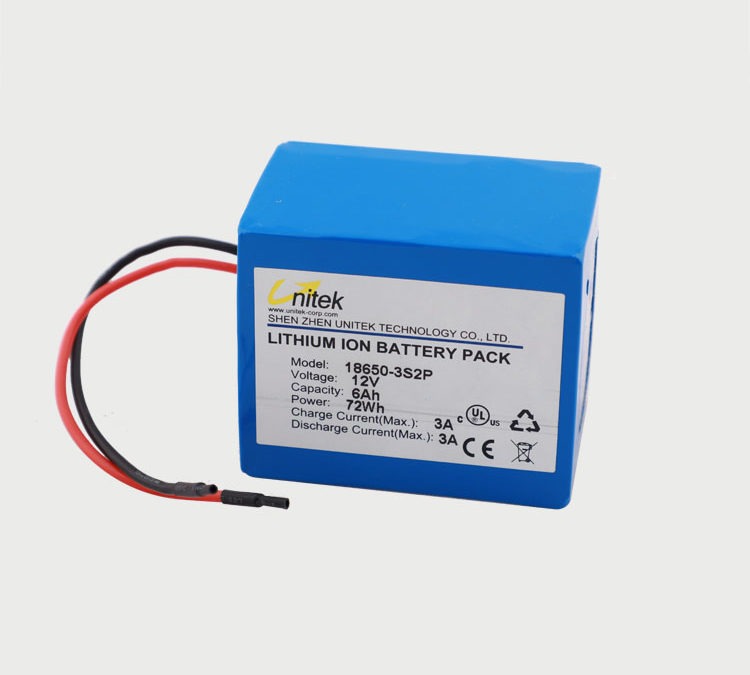Since entering the market, lithium-ion battery has been widely used because of its long service life, large specific capacity and no memory effect. There are some problems in the low-temperature use of lithium-ion batteries, such as low capacity, serious attenuation, poor cycle rate performance and so on.
It is reported that the discharge capacity of lithium-ion battery at – 20 ℃ is only about 31.5% of that at room temperature. The working temperature of traditional lithium ion battery is – 20 – + 55 ℃. However, in aerospace, electric vehicles and other fields, the battery is required to work normally at – 40 ℃. Therefore, it is of great significance to improve the low-temperature properties of lithium-ion batteries.

Factors restricting the low temperature performance of lithium ion batteries
The viscosity of electrolyte increases
At low temperature, the electrolyte partially solidifies, resulting in the decrease of conductivity of lithium-ion battery. The compatibility between electrolyte, negative electrode and diaphragm becomes poor.
The negative electrode of lithium ion battery precipitates lithium seriously
The precipitated metal lithium reacts with the electrolyte, and the product deposition leads to the increase of the interface thickness of the solid electrolyte.
Reduction of internal diffusion system of active substances
At low temperature, the charge transfer impedance of lithium-ion battery increases significantly.
Factors affecting low temperature performance of lithium ion battery
Electrolyte
Electrolyte has the greatest influence on the low temperature performance of lithium ion battery. The composition and physicochemical properties of electrolyte have an important impact on the low temperature performance of battery. The problem of battery cycling at low temperature is that the electrolyte viscosity will increase and the ion conduction velocity will slow down. The electron migration velocity of the external circuit does not match. Therefore, the battery appears serious polarization and the charge discharge capacity decreases sharply. Especially when charging at low temperature, lithium ions are easy to form lithium dendrites on the surface of the negative electrode, resulting in battery failure.
How to treat lithium battery correctly in winter
Do not use lithium batteries at low temperatures
Temperature has a great impact on lithium batteries. The lower the temperature, the lower the activity of lithium battery, which directly reduces the charge discharge efficiency. Generally speaking, the operating temperature of lithium battery is – 20 ° C – 60 ° C.
When the temperature is lower than 0 ℃, pay attention not to charge outdoors. We can take the battery indoors for charging. When the temperature is lower than – 20 ℃, the battery will automatically enter the sleep state and cannot be used normally. Therefore, users in particularly cold places in the north, who really do not have indoor charging conditions, should make full use of the waste heat during battery discharge and charge in the sun immediately after parking, so as to increase the charging capacity and avoid lithium precipitation.
Develop the habit of filling as you use
In winter, when the battery power is too low, we should charge in time and form the good habit of charging with use. Remember, never estimate the battery power in winter according to the normal battery life. In winter, the activity of lithium battery decreases, which is very easy to cause over discharge and overcharge. At least, it will affect the service life of the battery, and at worst, it will cause combustion accidents. Therefore, pay more attention to charging in the way of shallow discharge and shallow charge in winter. In particular, do not park the vehicle for a long time by charging all the time to avoid overcharging.
Do not charge for a long time
Do not charge for a long time for convenience. Just pull it out when it is full. The charging environment in winter shall not be lower than 0 ℃. During charging, do not leave too far to prevent emergencies and deal with them in time.
When charging, use a special charger for lithium battery
The market is full of a large number of inferior chargers. The use of inferior chargers will cause battery damage and even fire. Don’t be greedy for cheap, buy low-cost and unprotected products, and don’t use lead-acid battery chargers. If your charger doesn’t work properly, stop using it immediately. Don’t lose money for small things.
Pay attention to the battery life and replace it in time
Lithium batteries have a service life, and the service life of batteries of different specifications and models is different. Coupled with improper daily use, the service life of the battery ranges from a few months to three years.
Leave enough electricity for the winter
If the battery is not used for a long time, remember to charge 50% – 80% of the power, remove it from the vehicle for storage, and charge it regularly, about once a month. Note: the battery must be stored in a dry environment.
Place the battery correctly
Do not immerse the battery in water or wet the battery.
